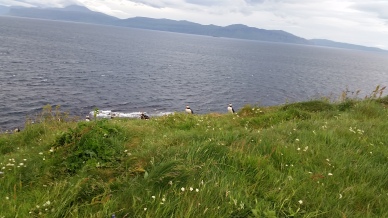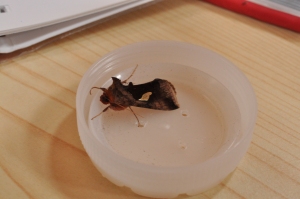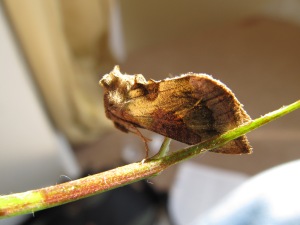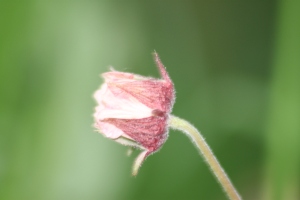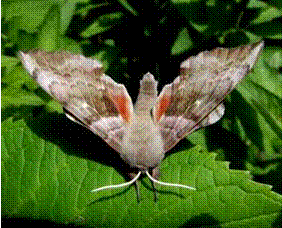Good morning from the Ross of Mull! We’re enjoying a day in the office for the first time in a while after a busy week last week.
We kicked things off on Sunday with our Thistle Camp Volunteers who were staying at Burg for the week. In the morning we carried out some habitat management, clearing overgrown bracken which was hiding many of the old farm dwellings from view.
After lunch, we moved onto beach cleaning and removed over 10 black bin bags full of ropes, plastics and other interesting items including several shotgun cartridges from Burg’s shoreline. For the remainder of the week, the Thistle Campers carried out various other tasks such as moth surveys, path and road repairs and gorse removal. Their effort throughout the week was greatly appreciated and we can’t thank them enough for their help!
On both Tuesday and Friday, Emily and myself carried out seabird surveys of the many islets around the coast of Iona with the help of the Mull Bird Club and aboard the ‘Birthe Marie’.
Sea bird colonies around Scotland have been in decline for a number of years and therefore, it is important that we monitor our populations on an annual basis. During our two days surveying, we recorded numbers of shags, fulmars, gulls, kittiwakes, oyster catchers and puffins and Emily is currently in the process of writing up the results and I’m sure they will be published shortly.
On Wednesday, we teamed up with tour operator ‘Turus Mara’ and the Hebridean Whale and Dolphin Trust to organise an evening trip to Staffa. Although the weather wasn’t as pleasant as the previous week, our guests had an extremely enjoyable evening. Staffa’s puffins were in great spirits and were often seen feeding mouthfuls of sand eels to their pufflings!
Whilst our guests were on Staffa, I carried out a count of the fulmar population on Staffa with the help of Izzy from the HWDT. We counted 94 pairs of fulmars on the island – a slight decrease in comparison to 2015.
On our way back, ‘Turus Mara’ skipper Colin spotted a Minke whale and we had the pleasure of watching it surface for around 10 minutes before it finally disappeared from view heading south towards the Ross of Mull. If that wasn’t enough, we also had the pleasure of enjoying another fantastic sunset!
On Thursday, we carried out our annual goat survey on Burg. The goats here are feral and are believed to descend from those left behind during the Highland Clearances. We monitor the goat population so that the grazing on Burg can be managed appropriately. In total, we counted 115 goats, whilst we also had the pleasure of encountering two golden eagles and several red deer!
Overall, it was an extremely enjoyable and productive week and we thank the Thistle Camp volunteers, Mull Bird Club , Turus Mara, HWDT and Mark Jardine of Alternative Boat Hire for their assistance throughout the week.
Next up, we have our Moth and Wildflower walk on Wednesday at Burg. We will be meeting at the NTS Car Park at 10am. Booking is essential and can be made via email (ewilkins@nts.org.uk) or by phone (07717581405 or 01681700659).
I look forward to meeting you in the near future.
Daniel




